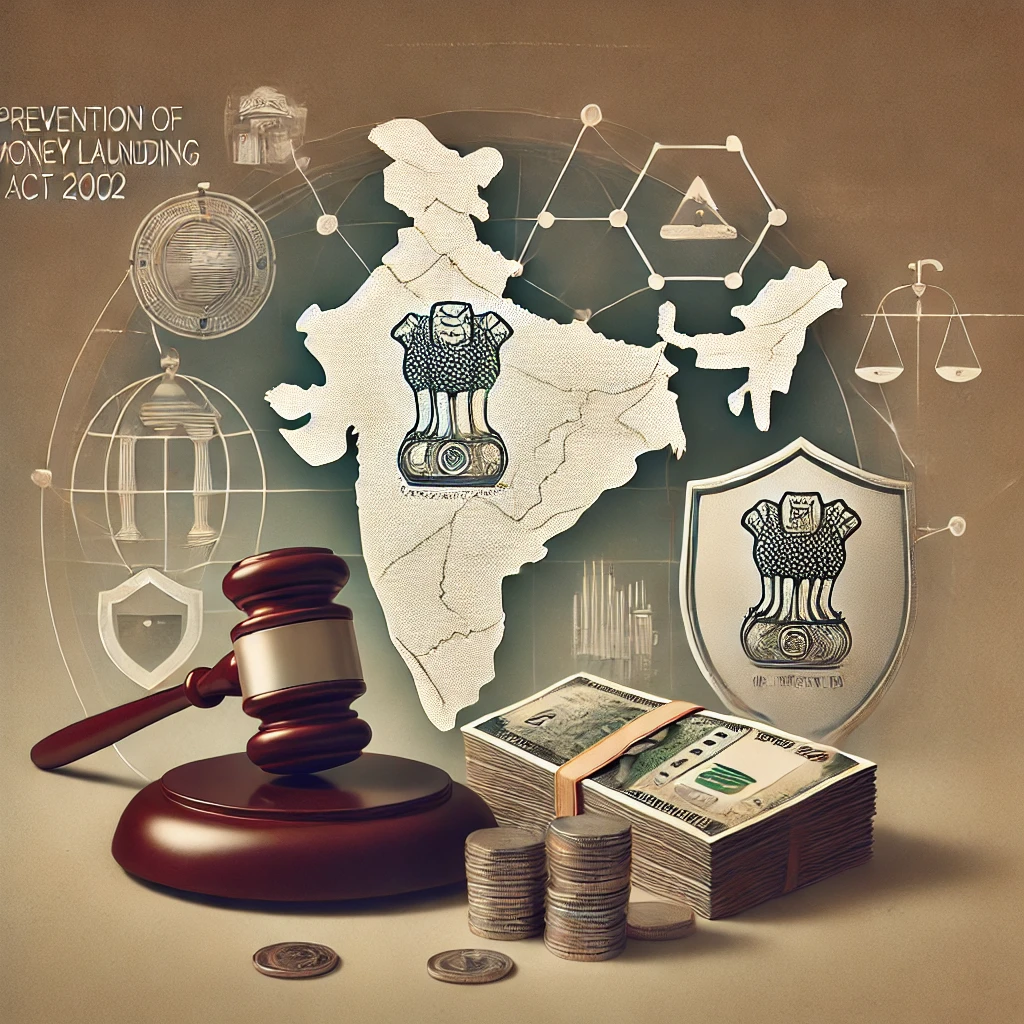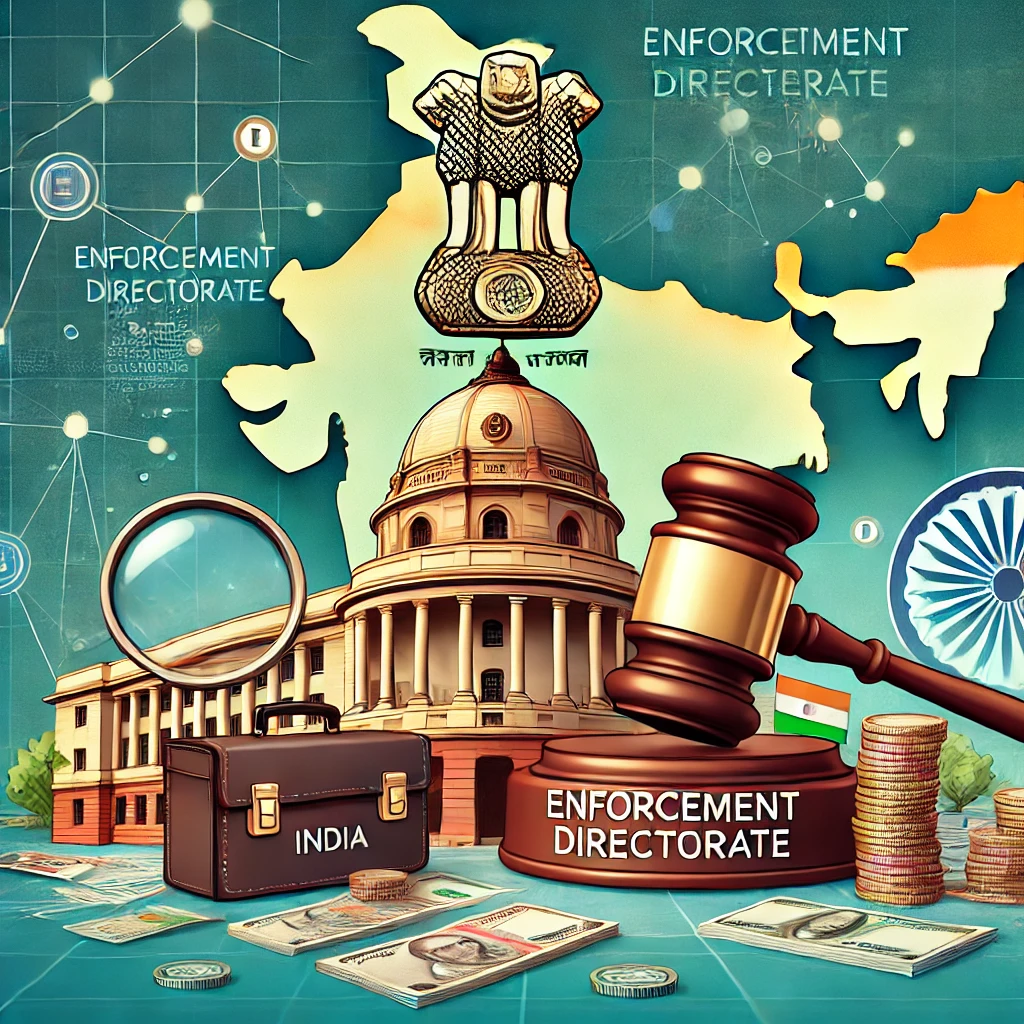The Prevention of Money Laundering Act (PMLA), 2002, is important legislation that enforces the prevention of money laundering in India. Very recently, the Supreme Court refused a petition filed by an important political leader challenging his arrest by the Enforcement Directorate (ED) on charges of money laundering. That event indicates that the Act still holds water in curbing financial crimes in India. Money laundering is the process or act of rendering numerous funds generated from illegal activities, such as drug smuggling or funding of terrorism, to appear legitimate. In this sense, the PMLA plays a very crucial role in the prevention of such activity and ensures that the people engaged in it are prosecuted and their ill-gotten money confiscated.
What is Money Laundering?
Money laundering is the process of giving the appearance of getting large amounts of money from a criminal activity, such as drug trafficking or funding for terrorists, in order for it to look legitimate. Generally, it normally involves a series of transactions arranged in such a way that disguises their legal origins since they were obtained illegitimately.
About
Money laundering is a process whereby dirty money transforms into seemingly clean money. Serious and highly profitable crimes committed include selling off illegal arms, smuggling, drug trafficking, and frauds on account of these create the motive to launder it. It involves several steps so that one can camouflage the original source as incriminating, hence very hard for the authorities.
Stages
- Placement: It is the first layer in which the money from the crime is fed into the financial system. In this case, it usually involves persons depositing small amounts of money into bank accounts or making purchases of high-value items.
- Layering: Here, through various transactions, it attempts to disguise the origin of money. A technique for layering is through moving money from one account into another, as well as investing in a wide range of financial instruments.
- Integration: The final stage is the infusion of the cleaned money into the economy as clean funds. This is where the laundered money can now be put to free use without alerting suspicion to complete the laundering cycle.

What is the Prevention of Money Laundering Act (PMLA), 2002?
Prevention of Money Laundering Act (PMLA) Act, 2002-the Prevention of Money Laundering Act, 2002, is enacted to combat the menace of money laundering and to provide for the confiscation of property derived from, or involved in, money laundering. It forms the backbone of India’s legal framework against money laundering and is applicable to all financial institutions, banks, mutual funds, insurance companies, and their intermediaries.
As set out by its declared objectives, the PMLA aims to prevent money laundering and also provide for the confiscation of properties traceable to such activities. Its provisions cover almost all financial entities, including banks, and mutual funds. The legislation empowers authorities to take a sterner attitude against money laundering activities while still ensuring that such ill-gotten gains will not be rehabilitated in the mainstream of the economy.
Background
The PMLA was inspired by the international conventions and agreements in fighting money laundering. The major agreements included the United Nations Convention Against Illicit Traffic in Narcotic Drugs and Psychotropic Substances passed in 1988, the Base Statement of Principles passed in 1989, and the Forty Recommendations from the Financial Action Task Force in 1990. Therefore, such international commitments forced India to introduce stringent anti-money laundering laws through the PMLA.
PMLA Amendments
- Status of Proceeds of Crime: Any property so far derived from or as a result of any crime related to or analogous with the scheduled offence falls within its ambit.
- Redefined Money Laundering: The bill attaches a completely independent character to money laundering as distinct from the predicate offense
- Continuing Nature of Offense: The offense of money laundering continues as long as a person continues to benefit from the proceeds of crime.
What is the Enforcement Directorate?
It is a multi-disciplinary organization committed to investigating economic crimes and enforces laws of foreign exchange. In addition to these roles, ED has other vital responsibilities such as money laundering and financial compliance.

History
The ED was established on May 1, 1956, as an ‘Enforcement Unit’ of the Department of Economic Affairs to deal with violations of exchange control laws under the Foreign Exchange Regulation Act, 1947. After liberalization of the economy, FERA was replaced by the Foreign Exchange Management Act in 1999. The mandate of the ED increased with the Fugitive Economic Offenders Act passed in 2018.
Functions
- PMLA, 2002: It involves investigation and tracing of assets acquired from proceeds of crime, provisional attachment of property, and prosecution of offenders under the PMLA.
- FEMA, 1999: It inquires into suspected violations of exchange law, adjudicates cases, and imposes penalties.
- FEOA, 2018: It attaches properties of fugitive economic offenders and provides for confiscation thereof by the Central Government.
- Sponsoring agency under COFEPOSA: Regarding the Conservation of Foreign Exchange and Prevention of Smuggling Activities Act, 1974, the ED promotes cases related to preventive detention for contraventions of FEMA.
Rigorous measures and the progressively changing legal framework amply highlight the need for effective measures to be taken against money laundering in order to maintain the soundness of the financial system and uphold the rule of law.
Conclusion
Basically, this is the Prevention of Money Laundering Act of 2002-an important cornerstone in India’s efforts to combat the scourge of money laundering. For UPSC aspirants, this law is essential to be scrutinized and implemented, relevant not only for the exams but also to realize the greater consequences on national security and economic stability. The constant updating of laws to prevent financial crimes shows the dynamism governance needs to be put in and the judiciary’s role in creating a fragile delicate balance that is seen in justice.
| PMLA UPSC Notes |
| 1. This refers to a process where criminally obtained proceeds of crimes like drug trafficking and terrorism financing are made to look clean by transforming them into their seemingly legitimate appearance, often through confusing financial transactions. 2. PMLA, 2002 is enacted to prevent money laundering in India. It deals with attachment and forfeiture of property. The Act deals with financial institutions and intermediaries, such as banks and insurance companies, involved with money laundering. 3. There are international conventions of this nature, like the 1988 UN Convention Against Illicit Traffic in Narcotic Drugs and the Financial Action Task Force’s Forty Recommendations of 1990. 4. When the Supreme Court dismissed a petition that contested the arrest of a political leader by ED under PMLA, it proved the success of the act in its control of financial crimes. 6. The Enforcement Directorate was constituted in 1956 with an undertaking to probe into money laundering and other violations in respect of foreign exchange. 7. It operates under various acts like PMLA, Foreign Exchange Management Act (FEMA), and Fugitive Economic Offenders Act (FEOA). 8. PMLA has the authority to attach properties and prosecute the people involved in money laundering, thereby preventing ill-gotten gains from getting reconstituted in the economy. |

